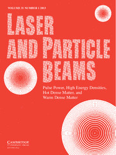
LASER AND PARTICLE BEAMS
Scope & Guideline
Transforming Knowledge in Atomic and Molecular Sciences
Introduction
Aims and Scopes
- Laser-Driven Particle Acceleration:
Research on the use of lasers to accelerate particles, including protons and ions, focusing on methods, efficiencies, and resultant particle characteristics. - Inertial Fusion Studies:
Exploration of inertial confinement fusion, particularly using laser-driven approaches, to investigate fusion reactions and optimize conditions for energy production. - Laser-Induced Spectroscopy and Diagnostics:
Application of lasers in various spectroscopic techniques for diagnostics in high-energy physics, including the analysis of particle interactions and emissions. - Plasma Physics and Interactions:
Studies on laser-plasma interactions, including modeling and simulations, to understand phenomena such as shock waves, heating, and particle generation. - Advanced Materials and Fabrication Techniques:
Investigation into the use of laser technology for material processing, including machining and the development of novel materials in high-energy environments.
Trending and Emerging
- Fusion Research Innovations:
A surge in research on laser-driven fusion, particularly proton-boron (p-B11) fusion, indicates a growing interest in alternative fusion fuels and methods to achieve sustainable energy. - Artificial Intelligence in Laser Applications:
The incorporation of machine learning and deep learning techniques in simulations and diagnostics represents a trending theme, highlighting the integration of AI to enhance research outcomes in laser and particle interactions. - Advanced Diagnostic Techniques:
Emerging focus on sophisticated diagnostic methods, such as Thomson spectrometry and particle detection systems, showcases the need for precision in measuring outcomes from high-energy laser experiments. - High-Energy Density Physics:
Increased interest in high-energy density physics studies, particularly those involving intense laser interactions, reveals a trend towards understanding extreme states of matter and their implications. - Environmentally Friendly Laser Technologies:
Research exploring the environmental impacts and sustainability of laser technologies, including efforts to reduce harmful emissions during laser processes, is gaining traction as global awareness of environmental issues rises.
Declining or Waning
- Traditional Particle Beam Research:
There has been a noticeable decrease in studies focusing solely on traditional particle beam physics without the integration of laser technology, as the field evolves towards more laser-centric applications. - Low-Power Laser Applications:
Research focusing on low-power lasers and their applications has diminished as the community shifts towards high-intensity laser interactions and their effects on particle acceleration. - Basic Theoretical Models in Plasma Physics:
While foundational theoretical models remain important, the journal has seen fewer papers dedicated solely to basic theoretical explorations, as the emphasis has shifted towards experimental validation and advanced simulations.
Similar Journals
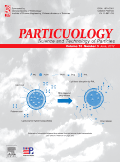
Particuology
Pioneering Research in Particle Science and EngineeringParticuology is a premier international journal published by Elsevier Science Inc, focusing on the critical advancements in the fields of *Chemical Engineering*, *Condensed Matter Physics*, and *Materials Science*. As a Q2 journal in its respective categories for 2023, it offers a platform for researchers to disseminate their findings and engage with the latest developments in particle technology and related areas. With an impressive Scopus rank of 71/273 in General Chemical Engineering and 122/463 in General Materials Science, Particuology is positioned at the forefront of scientific inquiry and innovation. The journal encourages open access, ensuring that groundbreaking research is available to a global audience, thus fostering collaboration and knowledge sharing among academia and industry professionals. With a publication history dating back to 2008, Particuology continues to shape the future of particle science and engineering by providing rigorous peer-reviewed content that reflects the highest standards of academic excellence.
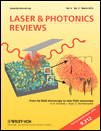
Laser & Photonics Reviews
Bridging Theory and Application in PhotonicsLaser & Photonics Reviews is a prestigious academic journal published by WILEY-V C H VERLAG GMBH, based in Germany. Since its inception in 2007, the journal has rapidly established itself as a leading outlet in the fields of Atomic and Molecular Physics, Condensed Matter Physics, and Electronic, Optical, and Magnetic Materials. With its impressive impact factor and presence in the Q1 category across multiple relevant disciplines, it ranks among the top-tier journals in its field—ranked #18 out of 434 in Condensed Matter Physics and #13 out of 224 in Atomic and Molecular Physics according to Scopus rankings. The journal emphasizes high-quality research that contributes significantly to theoretical and applied photonics, bridging gaps between fundamental science and practical applications. Although access is not open, it remains essential reading for researchers, professionals, and students eager to stay abreast of groundbreaking advances and applications in laser technology and photonics. For further information and to explore its compelling articles, please visit its official site.

PHYSICS OF ATOMIC NUCLEI
Fostering Knowledge in Atomic and Molecular RealmsPHYSICS OF ATOMIC NUCLEI is a distinguished journal dedicated to advancing the understanding of nuclear and particle physics, published by PLEIADES PUBLISHING INC. With its ISSN 1063-7788 and E-ISSN 1562-692X, this journal serves as a vital resource for researchers, professionals, and students in the fields of atomic and molecular physics, as well as high-energy physics. The journal has been actively contributing to the scientific community since its inception in 1996 and continues to publish valuable findings through 2024. Despite its current standing in the Q4 category for both Atomic and Molecular Physics, and Nuclear and High Energy Physics, there is an abundance of potential for growth and impact in these disciplines, as evidenced by its placement in the Scopus rankings. While the journal does not currently offer open access, it remains committed to disseminating quality research that informs and engages the scientific community. Explore PHYSICS OF ATOMIC NUCLEI to stay at the forefront of nuclear physics research and contribute to the dialogue in this critical area of study.
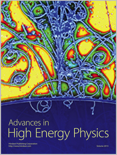
Advances in High Energy Physics
Unveiling the Universe: Your Gateway to High Energy DiscoveriesAdvances in High Energy Physics, published by HINDAWI LTD, is a premier open-access journal dedicated to the progressive field of Nuclear and High Energy Physics. With an ISSN of 1687-7357 and an E-ISSN of 1687-7365, this journal has been at the forefront of scientific discourse in high energy physics since its inception in 2007. The journal is notable for its impact within the community, currently holding a Q2 ranking in 2023 and positioned at #36 out of 87 in its category according to Scopus, highlighting its significant contribution to ongoing research and advancement in the field. Its accessible nature enables researchers, professionals, and students to engage with cutting-edge findings that shape our understanding of the universe. Spanning publications from 2010 through 2024, Advances in High Energy Physics serves as an invaluable resource for those looking to stay informed about the latest developments and methodologies in high energy physics across the globe.
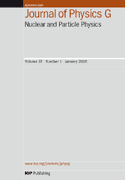
JOURNAL OF PHYSICS G-NUCLEAR AND PARTICLE PHYSICS
Elevating Knowledge in Nuclear Science and BeyondJOURNAL OF PHYSICS G-NUCLEAR AND PARTICLE PHYSICS, published by IOP Publishing Ltd, stands as a premier journal in the realm of Nuclear and High Energy Physics. With an established presence since 1989 and currently converging toward 2024, this influential journal emphasizes groundbreaking research and discoveries in particle physics, fostering the dissemination of knowledge among a global audience of researchers, professionals, and students. Recognized for its high-quality publications, it holds a Q1 ranking in its category for 2023, placing it at an impressive 87th percentile among 87 journals in its field as per Scopus Rankings. The journal's impact is reflected in its esteemed reputation, making it an essential resource for advancing the frontiers of physics. Although it currently does not operate under an open access model, the journal ensures that subscribers receive comprehensive insights into the latest developments and theoretical advances that shape our understanding of the universe.

Physical Review Accelerators and Beams
Pioneering Research for Tomorrow's PhysicsPhysical Review Accelerators and Beams, published by the American Physical Society, is a leading open-access journal dedicated to advancing the understanding of accelerators and beams, integral components of modern physics research. Established in 2016, this journal has quickly become a critical resource for researchers, professionals, and students in the fields of Nuclear and High Energy Physics, and Physics and Astronomy. The journal boasts a commendable impact factor and has achieved a Q2 ranking in reputable categories, reflecting its significant contribution to the field. With a commitment to open access, scholars can freely access a wealth of high-quality research articles that not only report on technological advancements but also explore novel experimental techniques and theoretical frameworks. The journal’s interdisciplinary approach and emphasis on rigorous peer-reviewed research make it an essential platform for disseminating innovative ideas, thus driving forward the frontiers of particle acceleration and related technologies. Located at One Physics Ellipse, College Park, MD 20740-3844, United States, it continues to cultivate a vibrant scientific community.

Physics of Particles and Nuclei Letters
Charting New Territories in Nuclear ResearchPhysics of Particles and Nuclei Letters, published by PLEIADES PUBLISHING INC, serves as a pivotal platform for the dissemination of cutting-edge research in the domains of particle and nuclear physics. With an ISSN of 1547-4771 and an E-ISSN of 1531-8567, this journal has been actively contributing to the scientific community since its inception in 2006 and continues to be influential, with a convergence period extending to 2024. While its open access options are limited, the journal is recognized for its rigorous peer-review process and commitment to quality, as reflected in its Scopus rankings across multiple categories, including a Q3 in Nuclear and High Energy Physics and Radiation in 2023. The journal is positioned to be a vital resource for researchers aiming to bridge theoretical understanding with practical applications in these highly specialized fields, fostering advances that resonate within atomic and molecular physics, radiology, and beyond. Its relevance continues to grow as the global scientific community seeks innovative solutions to complex problems in modern physics.
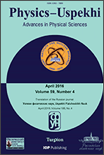
PHYSICS-USPEKHI
Illuminating Insights in Physics ResearchPHYSICS-USPEKHI, published by Uspekhi Fizicheskikh Nauk, is a prominent peer-reviewed journal in the field of physics and astronomy, reaching researchers and professionals since its inception in 1993. With an ISSN of 1063-7869 and an E-ISSN of 1468-4780, this esteemed journal has been classified as Q2 in the Physics and Astronomy category based on the 2023 quartiles, ranking 74 out of 243 journals in its Scopus classification, placing it in the 69th percentile. Although currently not an open access journal, it provides invaluable insights and advancements in the field, fostering an environment for scholarly exchange and collaborative research. Based in Moscow, Russia, PHYSICS-USPEKHI continues to shape the landscape of theoretical and experimental physics, inviting submissions that contribute to its rich legacy of high-impact scientific discourse.
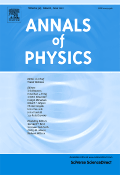
Annals of Physics
Exploring the universe of knowledge in Physics.Annals of Physics is a premier journal published by Academic Press Inc Elsevier Science, specializing in the expansive field of Physics and Astronomy. Since its inception in 1957, this journal has played a pivotal role in disseminating high-quality research and advancements across various sub-disciplines of physics. With a notable impact factor making it rank in the Q1 category for 2023, it stands among the top tier of scholarly publications, specifically sitting at Rank #63 out of 243 in the field, placing it in the 74th percentile according to Scopus metrics. Researchers are encouraged to submit their findings to reach a broad audience without the constraints of Open Access fees, promoting extensive visibility within the academic community. As we look ahead to 2024, Annals of Physics continues to be an essential resource for professionals, students, and academics striving to advance the frontiers of knowledge in physics and astronomy.
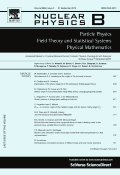
NUCLEAR PHYSICS B
Leading the Charge in Open Access Nuclear ResearchNUCLEAR PHYSICS B, published by Elsevier, stands at the forefront of research in the dynamic field of Nuclear and High Energy Physics. Established in 1967, this prestigious journal has developed a reputation for excellence, now positioned in the Q1 category according to its 2023 quartile rankings. With an impressive Scopus rank of #21 out of 87 in its category and a commendable 76th percentile, it serves as a vital resource for scholars investigating the underlying principles of nuclear interactions and particle physics. The journal transitioned to an Open Access model in 2014, ensuring that groundbreaking research is accessible to a global audience. Its commitment to quality and innovation makes NUCLEAR PHYSICS B an essential platform for researchers, professionals, and students aiming to stay at the cutting edge of discoveries in this expansive field, contributing to the scientific discourse for nearly six decades.